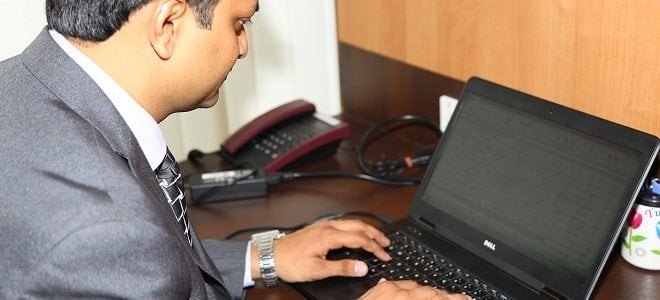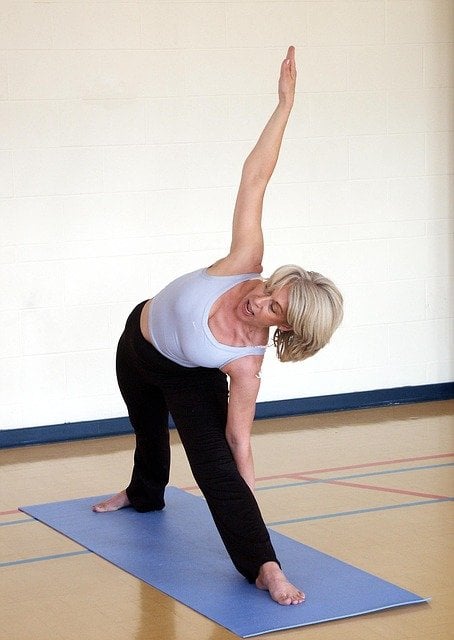
Posture Correction: Reduce Your Back Pain
Have you had or currently have back pain? More than 80% of us will experience back pain sometimes in our adult lives and holy crap does it hurt. One of the big culprits is our terrible posture. We need some serious posture correction.
Look at yourself, right now. I bet you are either leaning forward in your chair to read this article or you are nose deep in your phone. Either way, your body isn’t in the best position right now; Hell mines not….and I’m writing an article on posture correction. Well, let’s correct that. It’s time for posture correction. Let’s end our nagging back issues. Let’s dive in on some serious posture correction!
Posture Correction: Stop Slouching
By: Dr. Rawle Shewprashad, Paradigm Podiatry
Every one of us has had back pain or knows someone who has suffered from back pain at some point in their lives.
Sometimes it is just a minor ache and other times, it can be debilitating pain. For most cases, this can be rectified with some posture-building exercises in less than 15 minutes per day.
Better Back Tips
Get Up and Walk:
Walk for 5 minutes for every 60 minutes you are sitting to reduce stress and the negative health effects of sitting. This will also help move lymphatic fluid through your body and in blood circulation along with improving posture IF you walk with a full heel-to-toe gate pattern while holding a proper posture.
-Clint Fuqua, Fitness trainer/Author
Cobra stretch:
Lay on your stomach. Put your hands under your shoulders. Lift your chest in the air, bend your elbows back and pull your lats down. This is a great stretch as well as a strengthening move for the upper back.
–Ashley Pitt, Personal Trainer
Superman:
Start by lying on your stomach, extend arms out to the sides at 90-degree angles or keep arms outstretched. Engage muscles all the way down the spine to peel the upper body away from the floor, keep your nose pointed downward and the back of your neck long. Hold for 30 seconds and then release. Repeat 2 more times.
-Shay Kostabi, Master ReXist360 Trainer
The most common client that I have found over the years is a person who sits at a desk too long.
They are usually in front of a computer for 40 hours or more every week. Due to this, some key posture muscles undergo adaptive shortening, which is the tightening of muscles from being held in a shortened position for extended periods of time. With this, the antagonist (or opposing) muscle will become overstretched and weakened.
This person’s head will protrude forward, their shoulders will roll forward, and their hip flexors will get tight. This combination can eventually lead to back pain. Let’s break this down one by one.
1) The Problem: Pelvic Tilt
Anterior pelvic tilt from tight hip flexors, which causes the abdominals to become overstretched and the lower back muscles to tighten.
The Solution: I have my clients perform supersets to save time and increase intensity. They will do a hip flexor stretch for 30 seconds on each side. Then without rest, my client will perform a set of ten to twenty reps of slow and controlled crunches on a BOSU ball.
Each repetition should take a total of 10 seconds (count one Mississippi, two Mississippi…) or 5 seconds up and 5 seconds down. An alternative for those without a BOSU ball would be 20 to 50 slow and controlled bicycle crunches. Do a total of three sets of these exercises.
2) The Problem: Shoulder Roll
Tight pecs or chest muscles, which cause the rear deltoids and rhomboids to become weakened. The shoulders roll forward this person’s chest caves in.
The Solution: You guessed it…a superset! This time we will perform a pectoral stretch against a wall for 30 seconds on each side and immediately follow up with a set of fifteen reverse flies with a theraband or cables.
At the point of maximal contraction (or when the theraband is making contact with your chest), contract your rhomboids by squeezing your scapulae together. Three sets will be your goal again.
3) The Problem: Forward Head
Your head is stuck in a forward position (anterior head carriage).
The Solution: Take your index finger and push your chin straight back as far as you can comfortably go. Hold this position for 5-10 seconds and do nine more repetitions. These are called chin tucks and can be done throughout your workday to help improve your posture.
Note: For those with extreme forward head position, you may want to visit a chiropractor so they can stretch your neck muscles; mainly, but not limited to the sternocleidomastoid and upper trapezius muscles. [Note: #3 from Dr. Richard Brown of Brown Squared Chiropractic]
Posture Correction: Listen to the Doc
Dr. Eric Saxton, Saxton Chiropractic and Rehab, PLLC
Posture is the largest factor in people coming to my office in pain.
Poor posture, caused by sitting all day, working at a desk, or head buried in a cellphone or tablet, can draw your body out of optimal position and requires more effort from your muscles or use different muscles altogether to accomplish daily tasks. The great thing about poor posture is how correctable it can be with exercise.
 The upper back posture seems to be the most prevalent, and increasingly so with younger and younger people.
The upper back posture seems to be the most prevalent, and increasingly so with younger and younger people.
This posture is rendered as Upper Cross Syndrome and is a combination of muscle imbalances that result in the ear and shoulders drawing forward and around, respectively, from the midline of your body.
The most important stretch for this syndrome is a Doorway Stretch for the pectoral muscles. To do the stretch, hold your arms parallel to the ground and rest your elbow on a door frame with your hand pointing up along the door frame.
Then you lean forward and will feel a stretch on the front of the shoulder. Stretching this muscle will allow your shoulders to move posteriorly into a better position.
Once the pectoral muscles are loosened, we have to strengthen the rhomboids and lower trapezius to keep them there. This can be done at the gym using deep rows and lat pulls. To accomplish this at home, you can utilize Wall Angels and T, I, Y Exercises.
Wall angels require you to stand with your back against the wall and put your arms up over your head with the back of your hand and elbows firmly against the wall. With your elbows bent at 90 degrees, raise and lower your arms as much as you can like you are making an angel on the wall.
Only go as high or as low as you can maintain contact with the wall with your hands and elbows.
T, I, Y exercises can be done by laying face down on the floor or bench, using light weights, such as a water bottle. With the weights in each hand with your thumbs pointed to the sky, make the shape of a T, I, and Y and pinch your shoulder blades together and lift your hands toward the sky.
Some other components of the Upper Cross Syndrome rehab consist of stretching the upper trapezius and performing deep neck flexion exercises. The upper trapezius contains the most common muscle trigger point in the body.
Most people (90% of my patients with upper back or neck pain) have these trigger points and is an indicator that the muscle is working harder than it should be, probably due to posture. For example, for every inch forward of center your head is positioned, it increases the stress of the muscles by 10 pounds.
The body also responds with tightening up the joints in the spine so that the muscles don’t have to work so hard to hold the head up, resulting in stiff and sore feeling.
More Tips:

Row/Lat Pulldown:
Using dumbbells or a machine, do a pulling motion, drawing the lat muscles down and back as you pull the weights down and in towards your body.
The ability to keep your shoulders back and down requires lat strength, which can be developed by rows of many kinds.
–Ashley Pitt, Personal Trainer
Better Butt, Better Back:
Our butt and legs are the powerhouses of our body, the trunk that supports the upper trunk and limbs…Lunges are a great way to strengthen the butt and the legs.
There are many variations of lunges that help keep a client motivated.
–Maureen Kemeny, Health Coach
Sit and Breathe:
To strengthen the TVA (TransVerse Abdominus), Diaphragm, and Spinal Erectors. Sit up tall on the edge or a bench or chair with shoulders back.
Breath and let stomach expand, Breath out and pull the stomach in all the way without losing posture for 30 seconds with long deep breaths.
-Clint Fuqua, Fitness trainer/Author
Wrap-Up
Hopefully, we all can take some of this valuable information away and implement it to either help reduce our back pain or help to prevent it in general.
Posture is incredibly important not only for avoiding back pain but for also helping you look stronger and more confident.
Posture Correction: Sit up, shoulders back, and head up, it’s time to take your posture seriously!
- Post-Workout Meal: Getting the Most from Your Workout - January 22, 2024
- 6 Ab Exercises To Blast Your Core - December 17, 2023
- 10 Office Exercises You Can Do To Burn Calories - November 19, 2023


